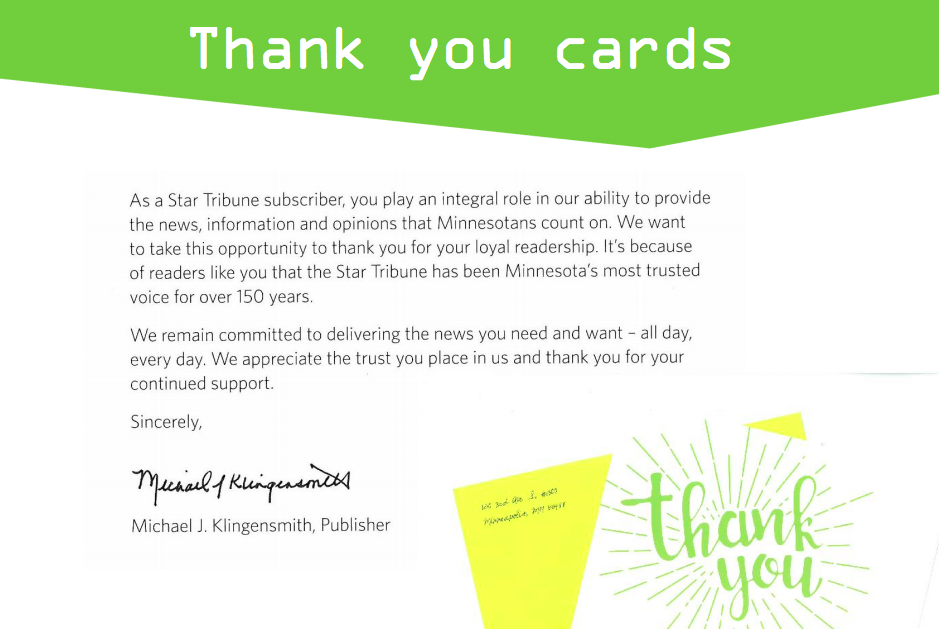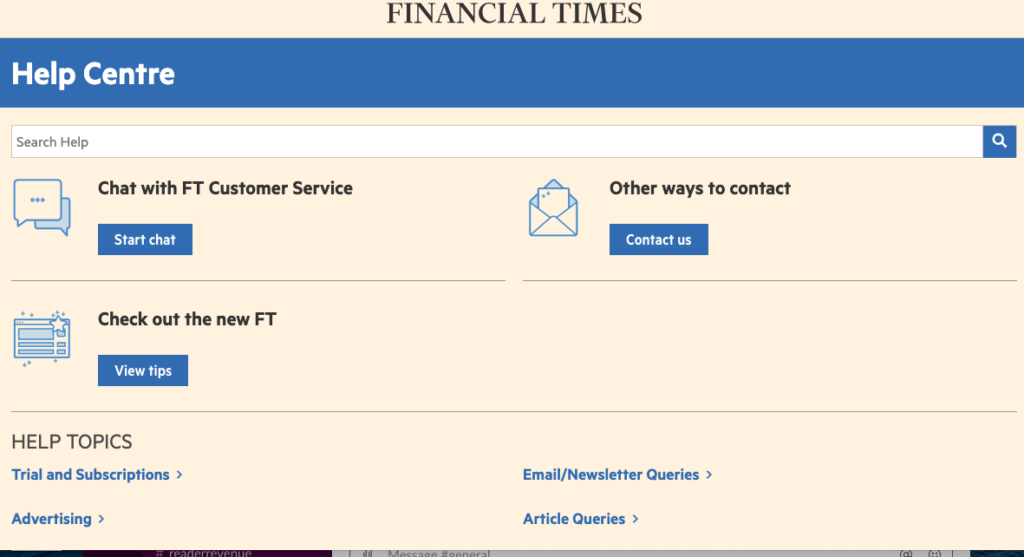
This is a critical moment to shape the experience of subscribers and influence their sense of attachment to your organization. You want them to embrace you as a valued part of their daily lives, not stop the subscription as soon as the initial offer ends.
This process, commonly called “onboarding,” is especially important in a digital environment where readers may need a nudge to establish the habit of engaging with your content. The experience is different from print delivery, where the paper lands on your doorstep.
News organizations should take certain crucial steps to make the onboarding experience as effective as possible.
First comes your welcome messaging, which you can provide in different digital formats — email, chat, video or a web page. The choice of format is not critical. Whatever your style, the key is to make a positive initial connection.
This is the time to remind subscribers of the features they have gained access to, including content, online tools, and benefits such as rewards programs.
This is also a perfect time to answer common questions, such as how to search for and save an article, and to offer tips on navigating your products. And it is an opportunity to create rapport, such as by letting readers know you value their engagement.
All these efforts support the overarching goals of onboarding — helping readers understand how to get the most value for their money and starting to build engagement that lasts.
What follows are some successful approaches to onboarding, reflecting varied aspects of this process.
Using a video to greet new customers: The Kansas City Star
New digital subscribers to the Kansas City Star receive an email with a welcome video that thanks them for subscribing and offers an array of “tips & tricks” to help them get started and deepen engagement.
As pleasant music plays in the background, the brief (under two-minute) video provides an online orientation to the benefits of subscribing. These include access to the e-edition, subscriber-only content on business and sports, the mobile app and the ability to save stories for offline viewing. The video explains how to report a problem and welcomes subscribers into the Star’s rewards program — noting they already earned bonus points for subscribing.
Saying thank you the classic way: Minneapolis Star Tribune
New subscribers to the Star Tribune receive a thank-you card in the mail signed by the publisher. The note is a way for the organization to communicate both the value of the content it provides and the importance of subscribers to the Star Tribune.
While expressing gratitude for the subscription, the card goes on to describe the Star Tribune as Minnesota’s “most trusted voice” and pledges to always provide the news that readers are looking for. Coming from the publisher, this welcome offers an appealing, personal touch and a signal that the new subscribers are highly valued.

A tactical thank you: McClatchy
New subscribers to McClatchy newspapers get a gracious welcome via email that goes a lot further than saying thanks. In the note, they are reminded of various benefits they have paid for — including access to quality journalism — all intended to affirm the value of their subscription and to encourage engagement.
The note is just the first step in making subscribers more aware of the benefits, a long-term effort that can be reinforced in subsequent communications. Highlighted benefits include the mobile app, unlimited digital access, the e-edition and rewards program.
The friendly follow-up: McClatchy
In an environment where reader revenue is paramount, efforts to deepen loyalty must continue permanently. One week after subscribing, readers of McClatchy newspapers receive another email that restates the value it emphasized in the initial thank-you note.
This friendly message about “insider tips” focuses on the rewards program (with a sign-up button) and e-edition, noting that it offers extra content. The tone of these early emails is service-oriented, reflecting a straightforward effort to convey the value of subscribing.

Directions for use: McClatchy
One month into their subscription, readers of McClatchy newspapers receive a colorful note that informs them of all the customer service functions they now can manage online. This practical message addresses some of the most common “how to” questions readers may have — including updating personal info, reporting a problem, requesting a pause in delivery and making a payment.
This approach not only promotes engagement but also encourages trust by assuring customers that their personal data are protected (a lock icon is displayed). Neither the initial thank-you note nor this customer service email includes requests for payment. Each is purely about services available to the new subscriber.
Online customer service: The Financial Times
The Financial Times’ help center serves as an expansive portal for readers and subscribers to get their questions answered and explore the publication’s many features. Users can clearly see their navigation options on the home page. There’s a prominent search bar. Users are further encouraged to connect with the FT’s customer service team via a prominently-displayed chatbot. Other ways to contact the organization, including via email, are located in a secondary position and rolled into a single function, which has the effect of making the chatbot stand out even more.
Just below the contact options, readers are invited to “Check out the new FT.” Those who click on that button receive various tips for a smooth and user-friendly way to navigate the site, aided by a video and FAQs. Help topics, such as subscription information, appear further down the help center home page. The topics are easy to read and useful — consistent with the FT’s strategy of providing helpful customer service online.

Educating new users: The Guardian
The Guardian’s website highlights practical information for subscribers in three categories: why to sign in, how to sign in (with details for different devices), and common troubleshooting questions.
A benefit of signing in, for example, is that users may leave a comment or edit their profile and email preferences. Troubleshooting examples include explaining how to reset a password and ensure that content in the premium app is free of ads, as promised.
Building bonds through newsletters: Dallas Morning News
Making strong content available through newsletters is a natural way for news organizations to deepen ties with their readers. Newsletters can keep readers engaged and coming back to the website, all the while conveying the breadth of content that your organization has to offer.
The Dallas Morning News offers an array of newsletters to digital subscribers at no extra charge, including breaking news alerts, top-quality stories, editorial commentary and copy on sports, entertainment, business and real estate. (Readers who do not pay have more limited access to these newsletters.)
The newsletters are designed to be mobile friendly and to reinforce the Morning News’s reputation as an “information source you trust.”
Starting a long-term relationship
In different ways, the varied onboarding tactics are all designed to make new subscribers feel enthusiastic about their purchase and set the stage for a bond that will deepen over time.
Publishers should make sure subscribers are aware of the features they are paying for, including content they may favor, perks they may enjoy and customer service they may need. The goal is to ensure a smooth and rewarding experience by providing guidance, making clear the value of your product and answering questions before subscribers even think of them.
While there is no single formula for perfect onboarding, the goal is clear — to introduce your offerings and all their value in the most helpful, appealing way possible.
Doing so will enhance the odds that new subscribers stick around for the long haul and accept your product as a permanent part of their lifestyle.
You might also be interested in:
As research continues to inform this slice of the news industry, we’ll continue learning, too. Who gets to be called a journalist in 2025 and beyond? What is the future of trustworthy information, especially considering the access to and trust for online content creators? How might journalism adapt to the rise, or co-opt the styles, of news influencers?
What if we started looking at our output as a product, not a service? Too often, we think "product" means a fancy app or a new website. But product isn’t about tech. It’s about intention.
When we began asking what kind of stories still mattered to Baca County, we realized many of them weren’t “breaking news” but generational memory. And the paper was the last remaining platform that treated those memories with care and context.



